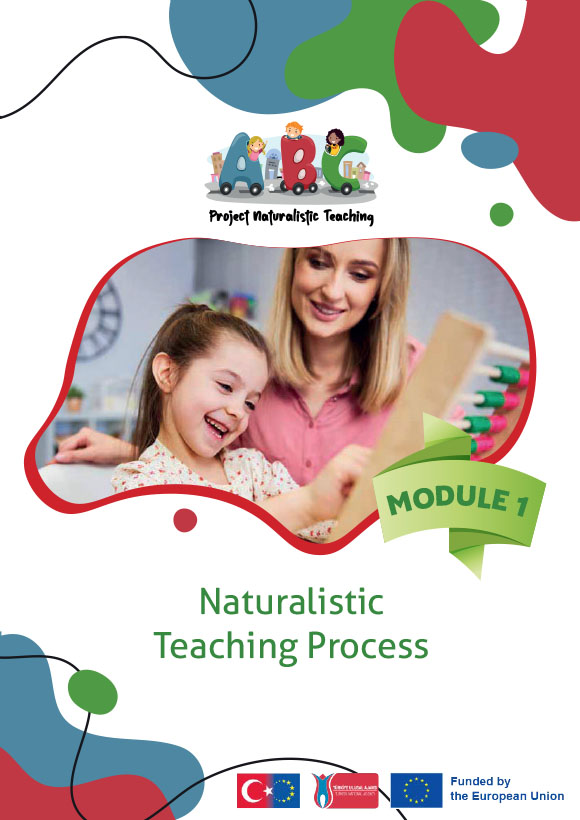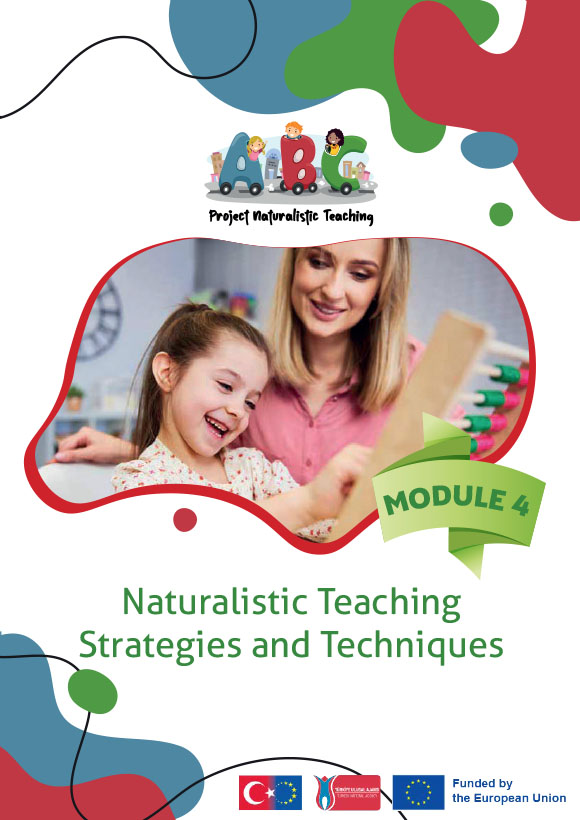Module 1. Naturalistic Teaching Process
Naturalistic teaching is defined as a process that helps the child to gain these goals through the meaningful embedding of the goals aimed for the child in the daily routine and activities of the child. In other words, natural teaching is a process; instructional education, which provides opportunities for all young children with special needs or at risk groups and with normal development to acquire skills and reinforce the acquired skills, and where education is presented in the child's daily natural life (routine, activities and transitions for the school environment, home environment and other natural environments).
Module 2. Definition and Characteristics of Young Children with Special Needs
The concept of developmental disability encompasses disabilities occur due to mental and/or physical disorders, often lifelong and usually onset before the age of 22 (AAIDD-American Association on Intellectual and Developmental Disabilities, 2010). The term learning disability used in the UK; The terms intellectual disability and cognitive disability, which are used in Australia, Canada and many European countries, are used as synonyms for developmental disability. Intellectual disability and Autism Spectrum Disorder are the most prominent special needs groups included in developmental disability, but in some definitions the scope is broader and disorders such as Cerebral Palsy are also considered within developmental disability.
Module 3. Responsive Adult Behaviors
Responsive adult behaviors are a collection of behaviors developed for adults (parents, teachers, etc.) who spend most of their time interacting with and caring for young children and aimed at supporting the development of the child.
Module 4. Naturalistic Teaching Strategies and Techniques
There are many teaching-learning opportunities for teachers and children during the routines, activities and transitions that occur naturally during the day, but it may not be possible for children to learn and develop skills alone, especially those that are difficult to learn. For this reason, as teachers, you need to create teaching opportunities during the day and use certain strategies and techniques while teaching. In the table below, naturalistic teaching strategies and techniques that you can use during daily routines, activities and transitions in the school environment are classified and all these applications mentioned in the following pages of the book are explained using examples, respectively.
Module 5. Environmental Arrangements
The natural environment in which the child lives provides numerous learning opportunities for the basic skills and behaviors that he or she needs to learn. As teachers, one of our most fundamental roles is to make some environmental arrangements in natural environments so that the child gains and reinforces basic skills and behaviors. In other words, while the regular routines, activities and transitions that take place during the day in the daily programs of preschool classes offer natural teaching opportunities to children, in some cases it is necessary to organize these routine, activity and transitional moments in order for children to gain the determined goals.








